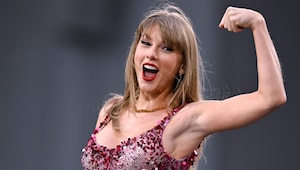
6 creators on how they handle the grind and the toll it takes on their bodies and minds
Discover how these content creators navigate the challenges of their craft and how they overcome them.

There is a rigour to most jobs that comes with the territory. Careers such as law, medicine, media, design, all come with a degree of ‘the grunt’ that is inherent in our understanding of it. It influences the way we approach it, the respect we have for it. Even careers that call on physical strength and labour—construction, welding, woodworking—have gravitas, a quiet nod to the toll it takes on the body. But there have always been professions that have fallen within a gap—the ones that are taxing, without that tax being acknowledged.
The creator is the most glaring example of that ilk. It is an industry that makes big money, has an undeniable presence, and is growing on the daily. But it is still treated by the layperson with a measure of frivolity. Popular imagination can’t quite reconcile taking #OOTD photos or shooting travel reels with the grind of a desk-chained nine-to-five. The average social media consumer is looking at that content constantly—for outfit ideas, cooking hacks, travel tips, or relationship advice. And yet, because of the amorphous nature of the industry, that consumer can’t ascribe the labour to it as their own day job.
But, in reality, creating can often be doubly draining for the creator; a lethal mixture of having to innovate and execute non-stop, for fear of losing an engaged audience. Most creators function as one-woman (or man) armies until they eventually acquire teams that help—but the multiple facets of the job can be exhausting and still unaccounted for in the public spectre. We talked to six creators across the beauty, lifestyle, fashion, sex, and sexuality spaces to understand how the process can bring them to the brink of a burnout and how they pull themselves back from it.

There’s always been myriad pressures on a young model in the fashion industry, but adding ‘creator’ to that list only exacerbates them. For Ikisvon, putting out A-grade material comes with a rigorous schedule. “I post about four to five times a week. Sometimes, even twice a day. I make a full schedule, almost every day.” There is always a mood board involved, she adds. “Music and visuals are so important to me. A song hits, and I start creating things in my head—how it should look, what outfits to wear, what kind of edits I should make for the drop (in the song). And I start jotting down ideas.”
The process also draws out the perfectionist in her, sometimes to a fault. “I am fastidious when it comes to putting out perfect content,” she laughs. “Being a perfectionist isn’t great for the mental and physical stress it brings with it. If my content isn’t perfect, it gives me anxiety. I like things to have a good, clean flow. I have visualised how it should look before I create it, and if it doesn’t turn out that way, I feel like I have let myself down.”
She recalls the most recent incident that told her to put the brakes on. “I had to go to hospital in March,” she recollects. “Working back-to-back, editing videos (I do them myself), a sleep schedule that was all over the place...I wasn’t eating well because of stress either. Eventually, I had to take a break. I didn’t open Instagram for a while, slept for days. I just did things I enjoy—played the guitar, sat alone in coffee shops, ate meals by myself. I sat, contemplated things, and spent time with my closest friends. No thoughts about posting or creating. Just a full week of rest.”

With over a million followers on Instagram and a territory that most creators have never charted, Leeza is in a unique position. Her content isn’t aesthetic or style-based— it is a larger call to action, an effort to educate. “Right now, the increasing restrictions and censorship around ‘sexual’ content—educational content around sexuality and the body—is being heavily restricted with new and increasingly punitive and prudish policies on the app,” says Leeza.
The other pressure, of course, is growth. “The pressure to keep growing, which means you have to keep posting, and there’s this tendency to track numbers and ‘likes’, as if Instagram is a sort of stock market of relevance,” she shakes her head. “When you zoom out and think about that, it is so ridiculous. Also, if your income comes from brand associations, then how much you get paid often depends on how large your audience is.”
She also recognises the irony—the content leads to success in other avenues, which then leaves you with less time to create that content. “I used to try to post on my page daily at one point. But, over the last two years, so much more has come up. As a result, I had to make peace with making less content.”
The burnout can be real, and for Leeza, it often comes with frustration of having worked on something but risking that it might be taken down by the platform. After years, she’s created room to breathe when she needs it. “I literally take breaks whenever I want to. It took a while to get to a place where I feel relaxed about doing that, but now I don’t think twice,” she smiles.

As a former beauty director at various lifestyle magazines, three beauty books under her belt, contributing to publications, and writing a column, creation is only part of Vasudha’s roster. “Mornings are when I write. I shoot and edit my videos in the afternoon, and do voice-overs at night—I really enjoy the process.” But running myriad things without a team also means that burnout can always be lurking around the corner. “Honestly, the quantity of work does get to me. It can get stressful to manage alone.”
But she says it is not the creation that is taxing for her; it is what comes after. “Creation is meditative to me. The process is fun! It’s watching for engagement right after—that’s the nightmare. Hoping that it’ll be a raging hit, the disappointment if it doesn’t get the likes or engagement you hoped it would.” Her fix is simple—post, and throw your phone away. “Not being attached to the outcome helps lower the stress.”
Vasudha believes it is the pursuit of “relevance” that is the big social media demon. “Things change impossibly fast now; you are constantly questioning if you’re keeping up.” It’s also what pulls one into the cycle of comparison. “You invariably compare yourself to other creators. I went through a year of trying to be more like someone else—more cool, more of a ‘badass’. But I realised that not only did I feel strange, it also confused my audience. However, I’m glad I did it, because it helped me be comfortable in my own skin.”

Few countries in the world make it easy to be openly queer, and India certainly isn’t part of that list. Being an openly queer, non-binary creator—also a well-known model and performing Drag King—is no picnic either. For Durga, the mental health stressors of that, as well as several others, led to a burnout—one that left them at a crossroads. “I moved from Mumbai to Goa in July last year because I knew I was at breaking point,” they tell Cosmo India. “I have always had a complicated relationship with my body, and my mental health was not being paid attention to. It was a mix of my ADHD (attention deficit/hyperactivity disorder), dysphoria, anxiety, and body dysmorphia. I am anorexic—that finally started to catch up with me in Mumbai.”
Instagram, or at least the way Durga once engaged with it, factored into the feeling of malaise. “Looking at other people’s work doesn’t help me. So I just don’t do that,” they say. Their focus is on their work alone, which comes more from moments than a set schedule. “I capture images and footage, and think about how to edit them later.” What has helped is regulating the use of Instagram. “I limit my time on the app with a 15-minute timer, and I try not to cross it. Doing my creation offline helps.” Durga’s burnout led them to make a few pivotal changes. “I have been working since I was 19...I would work obsessively, because I thought if I didn’t exhaust myself, I wasn’t worthy.” The Goa move has been as restorative as hoped. “I’ve been closer to nature, walking my dog, talking to more visual artists, growing my own food a little. Not wearing as much make-up, not colouring my hair as often. Cooking. Crying. Sharing. Healing,” they smile. “I am letting myself feel it all. The only way out is through.”

Couple creators Divesh Tolani and Atulan Purohit of Honey Imm Home™ feel that despite loving creating content, working as a pair can often double the pressure. “Creating content as a couple can be quite challenging, especially in our case, since we have very different personalities and strong opinions,” says Atulan. But they have learnt to work around that. “To avoid conflict, we take our time planning, and narrow down on content that we both love. When we are recording, one of us takes the reins. When it comes to editing, Divesh deserves all the credit.”
The stress catches up, though; especially when you’re only a two-man band. “It can be tiring to keep up,” Divesh shares. The burnout manifests in more creative than physical ways for the two. “We find ourselves creatively blocked,” says Divesh. “Recently, we sat for hours thinking about what to create. We are perfectionists, and we’re trying to focus less on that and more on consistency. We stay connected with our audience during those periods,” he smiles. And then, of course, there’s the fail-safe. “If nothing else works, we pack our bags and go on a vacation!”
This piece originally appeared in the May-June 2024 edition of Cosmopolitan India.
Lead Image Credit: Pexels
Also Read: How to deal with a job that doesn’t respect your boundaries
Also Read: The questions you should be asking at job interviews, according to career experts
more from Life

Scents that make staying in feel like a winter wonderland

'Bridgerton' season 4 trailer: Benedict and Sophie are ready to serve a Cinderella-esque romance

How training for a marathon became the most honest conversation I have ever had with myself

Emily in Paris season 5 is back—and we’re still hate-watching every minute of it

‘I’ve caught hundreds of men cheating’: TikTok’s honey trappers on how they know if someone is playing around

The best makeup tonics to upgrade your skincare and makeup routine

Taylor Swift's exact workout that kept her stage ready for the Eras Tour

“Pebbling” is the non-toxic, genuinely adorable dating trend we all needed

Is 'future faking' the new gaslighting? Decoding this new dating trend

Bad at gifting? Check out these stocking stuffer ideas based on each zodiac sign
